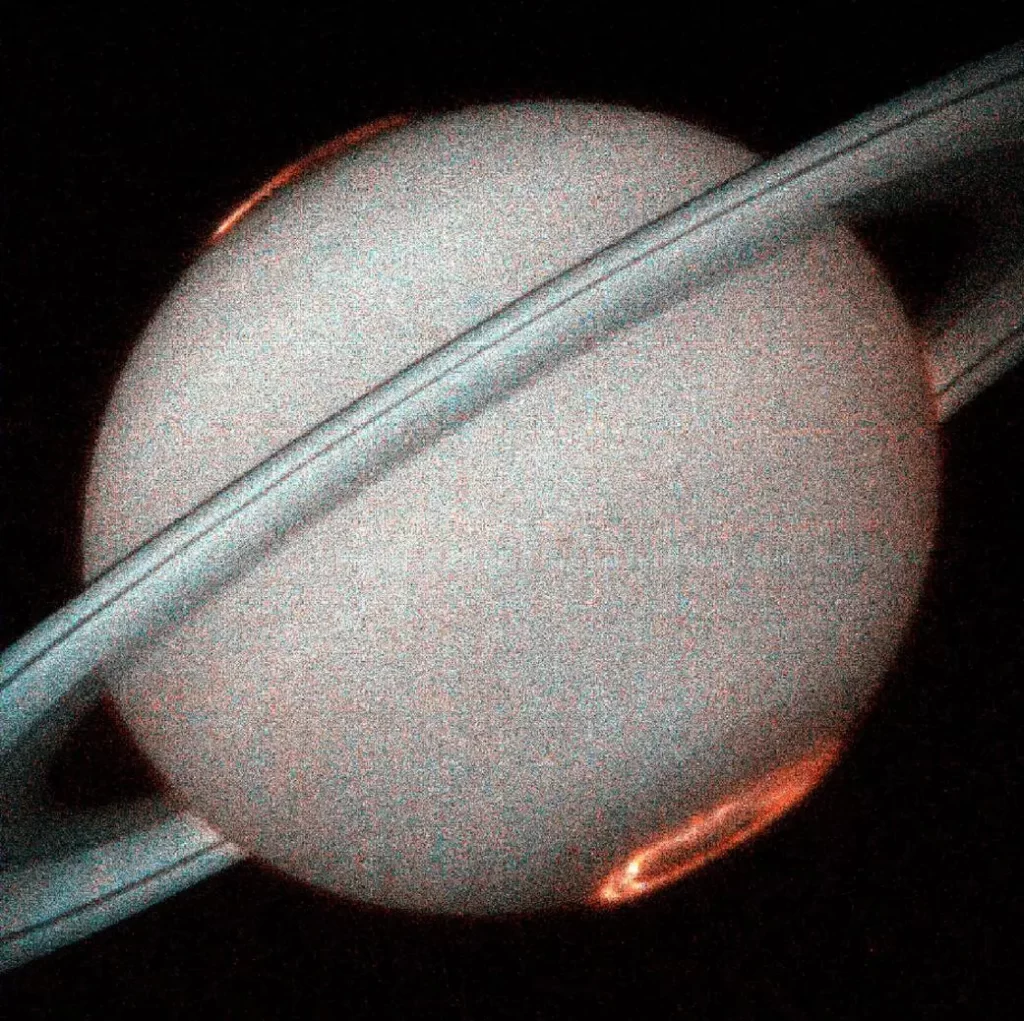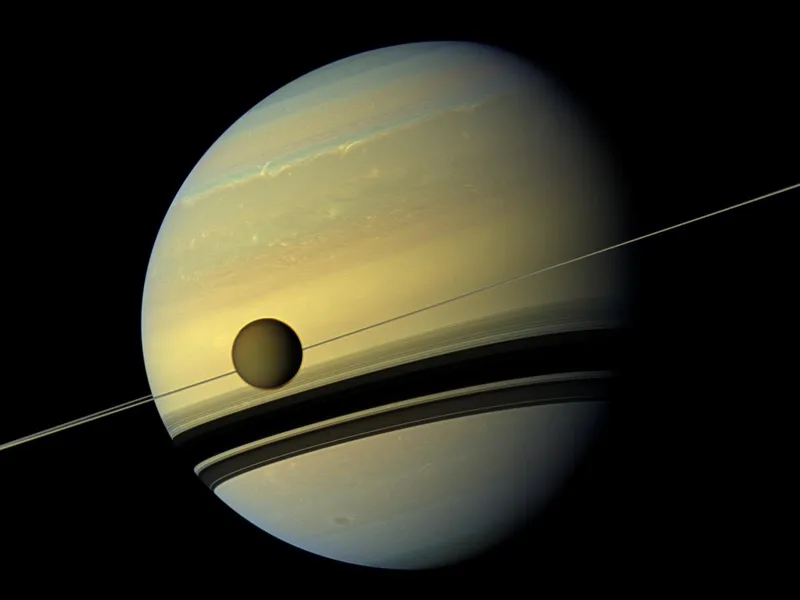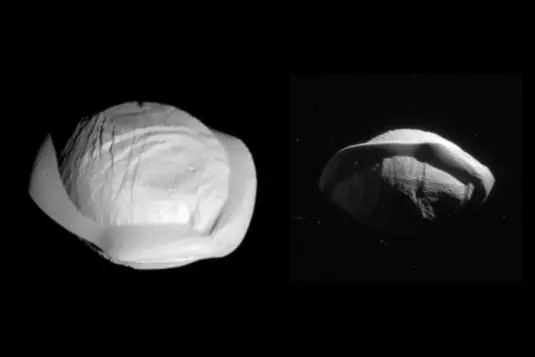Last updated on January 17th, 2024
52. Beautiful auroras are created near the poles of Saturn. These auroras are formed by charged particles from the Sun that interact with Saturn’s magnetic field.
53. NASA’s Pioneer 11 mission was the first to explore Saturn in 1979. It gave us the first images of Saturn, despite their low resolution. Scientists learned a lot from the images taken and the data sent back to Earth.
54. Why don’t the rings of Saturn flow off into space? According to the experts, every particle follows the same orbital path, and their speed is just enough to counter the planet’s gravitational pull.

Age Unknown
55. The age of Saturn’s rings is still undetermined. There are various estimations, ranging between 10 million and 100 million years ago.
Moons inside the rings
56. The ring around Saturn is only one kilometer (0.62 miles) thick, but the plane of the ring stretches over 280,000 km (just under 174,000 miles). Many of Saturn’s moons orbit inside of its ring.
57. You can’t actually see Saturn’s rings with the naked eye, just the planet itself. To see the rings, you need a telescope with at least 40 times magnification to make out the details of its rings.
Rings that cast shadows
58. Saturn’s rings actually create shadows on the planet. This is what often causes beautiful and interesting dark patterns you see in pictures. The rings can look different every time you look at them. Due to the orientation with the Earth and the Sun, the rings may change and give you new visuals.
Self defence
59. Saturn can protect the Earth simply because of how big it is and its strong gravitational pull. In theory, it blocks potentially dangerous comets and asteroids and changes their direction.

60. Saturn’s axial tilt sits at 26.73 degrees, which is similar to Earth’s 23.5-degree tilt. This means that, like Earth, Saturn experiences seasons.
61. Saturn emits radio waves that have been converted into sounds, which were monitored by the Cassani mission. The waves move in the circuit between Saturn and its moon, Enceladus, creating a symphony-like sound.
Moons, moons and many moons
62. Every four years, two moons in Saturn’s orbit, Janus and Epimetheus, completely switch orbits. Thanks to gravitational resonance, they will never collide.
63. The gaps between Saturn’s rings are maintained by the gravitational pull of many of its small moons. These moons are known as Shepherd moons because of their influence on guiding the rings.
64. Saturn has a moon called Mimas, which is often dubbed the Death Star moon. That’s because it eerily resembles the moon from the Star Wars franchise.
65. One of Saturn’s moons, Iapetus, is known as the two-faced moon. One hemisphere of the moon is light, and the other is dark, giving it a striking ridged appearance.
66. Enceladus’ surface is almost completely covered by ice, making it one of Saturn’s most reflective moons. It reflects around 90% of the light that hits its surface.
67. Hyperion, a moon in Saturn, is one of the most interesting moons of all, with a sponge-like unique shape. It’s theorized that Hyperion was once part of a larger moon destroyed on impact, giving it its porous appearance.

68. Pan is another fascinating moon in Saturn, with yet another unique shape. With a small walnut-like shape, it is suggested that the shape developed over time due to being in close Orbit to Saturn’s ring particles.
69. Saturn’s rings disappear roughly every 14 years, with the next expected date to be in March 2025. This is suggested to be caused by its direct lining with Earth at this time. It may appear as if the rings disappear, but they’re just not visible due to the angle and will soon reappear.
Quick facts about Saturn
| Date of Discovery | Unknown |
|---|---|
| Discovered by | Known by the Ancients |
| Orbit around Sun | 1,426,666,422 km |
| Volume | 827,129,915,150,897 cubic kilometer |
| Mass | 568,319,000,000,000,000,000,000,000 kg |
| Density | 0.687 g per cubic meter |
| Surface area | 42,612,133,285 kilometer square |
| Surface gravity | 10.4 meter per second square |
| Escape velocity | 129,924 km/h |
| Effective temperature | -178 degree Celcius |
| Diameter | 120660 km |
| Tilt of axis | 26.7 degrees |
| Mean orbit velocity | 34,701 km/h |
| Equatorial Radius | 58,232 km |
